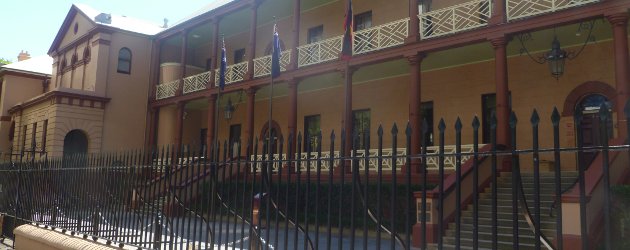 Welcome to the Tally Room’s complete guide to the 2011 New South Wales state election. This guide includes comprehensive coverage of each seat’s history, geography, political situation and results of the 2007 election, as well as maps and tables showing those results.
Welcome to the Tally Room’s complete guide to the 2011 New South Wales state election. This guide includes comprehensive coverage of each seat’s history, geography, political situation and results of the 2007 election, as well as maps and tables showing those results.
Seat profiles
Seat profiles have been produced for all 93 Legislative Assembly electorates. You can use the following pages to find your way to each seat’s profile.
Political history
New South Wales politics has been dominated by the Labor Party ever since 1941. In the 70 years since that election, the Coalition has only governed in New South Wales for just over 18 years, while the ALP has been in government for over 50 years.
The ALP governed New South Wales from 1941 to 1965, with five successive Premiers continuing the government.
Liberal leader Bob Askin led the Liberal-Country coalition to power in 1965. He ruled for the next decade, until his retirement in 1975. Two other Liberal Premiers held office before they lost power in 1976.
Labor again held power from 1976 to 1988, first with Neville Wran until 1986, and then Barrie Unsworth.
Nick Greiner led another conservative coalition to power with a landslide victory in 1988. The government held its majority for one term, and then served another term as a minority in a hung parliament, with Greiner succeeded by John Fahey in 1992.
The current Labor government has held power since 1995, first led by Bob Carr until 2005, then Morris Iemma until 2008, then Nathan Rees until he was replaced by Kristina Keneally in 2009.
Recent events
After a decade of domination, things started to slip for the Labor government in 2005, with the retirement of long-serving Premier Bob Carr.
His successor Morris Iemma originally appeared to be in serious danger of losing the 2007 election to Liberal leader John Brogden. Brogden’s leadership didn’t survive very long after Iemma came to power, with his resignation in late 2005.
Key seats
Current polling suggests that the Labor government is on track to lose a large number of seats. While there are many marginal seats with margins of less than 10%, it is expected that the contest will focus on safer Labor seats that could be vulnerable in the case of a landslide election.
Legislative Council
The NSW Legislative Council consists of 42 members, with 21 members elected by proportional representation every four years for an eight year term. All MLCs represent the entire state.
The Legislative Council is not controlled by any one party, with the balance of power shared by the Greens and a number of right-wing minor parties.


hi – thanks for the information on NSW electorates – I was wondering how you would inform of information on additional candidates for seats already profiled?
ta